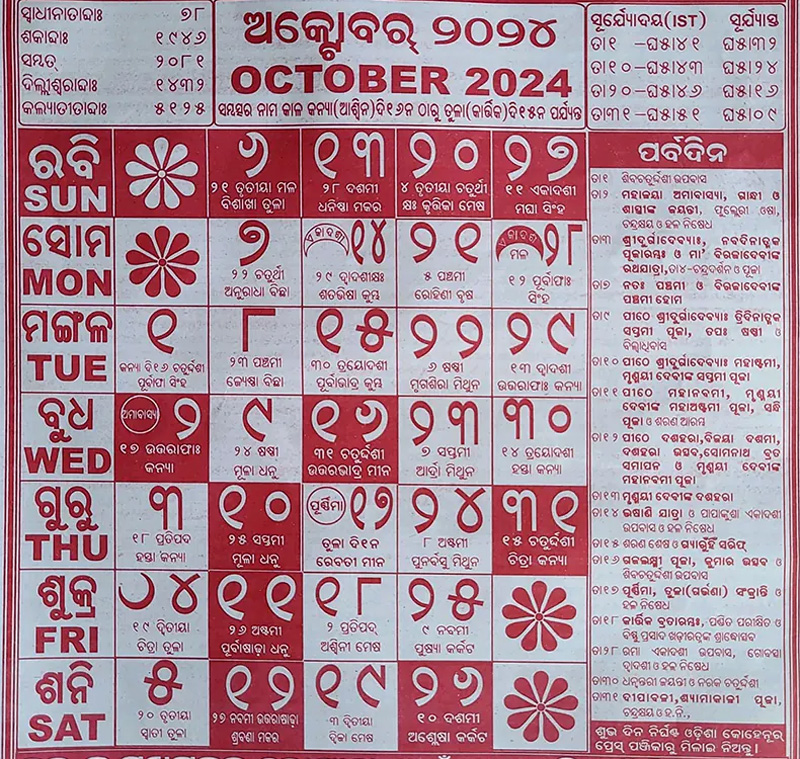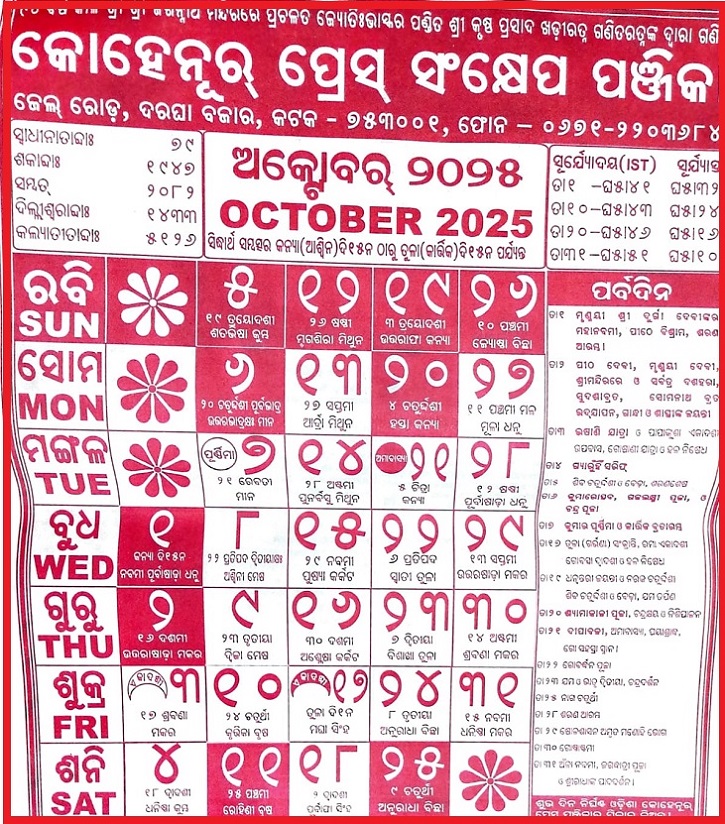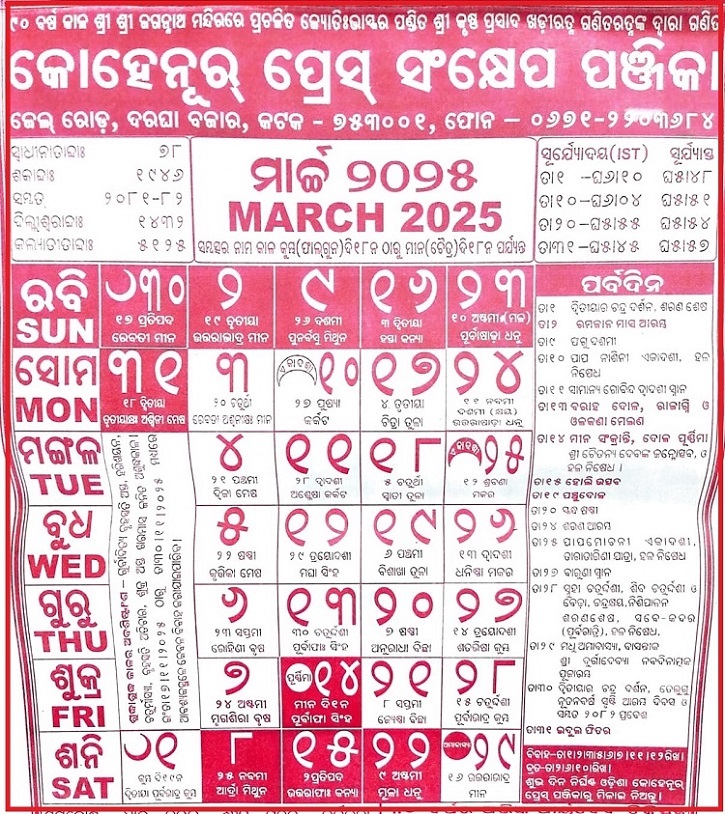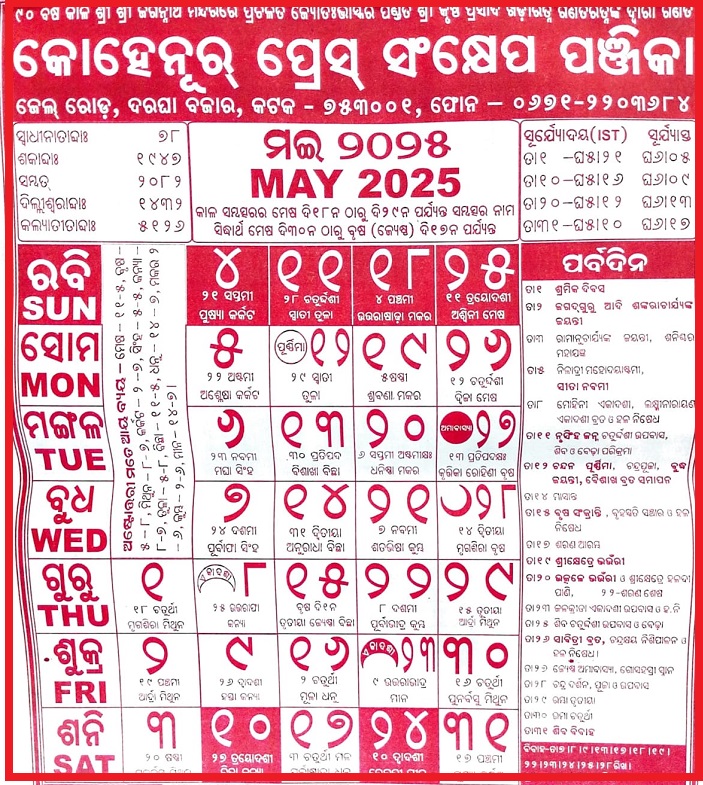
Introduction
Odia calendar 2026 October Masa represents a significant subject within its field, encompassing a range of practices, traditions, and applications that shape daily life and broader cultural landscapes in Odisha and among Odia communities worldwide. Understanding the Odia calendar, particularly how a specific period like October 2026 is observed, provides clarity about its background, its present relevance, and the way it continues to influence various aspects of society, from religious observances to agricultural planning and personal milestones. This traditional system is more than just a method of timekeeping; it is a living repository of cultural heritage and spiritual guidance.
Definition and Origin of Odia Calendar 2026 October Masa
The Odia calendar, known as the Odia Panjika, is a lunisolar calendar system predominantly used in the Indian state of Odisha. Its origins are deeply rooted in ancient Indian astronomical traditions, particularly the Surya Siddhanta, which provides the foundational principles for calculating planetary positions, tithis (lunar days), nakshatras (lunar mansions), and yogas. Unlike purely solar or lunar calendars, the Odia calendar synchronizes lunar months with the solar year, often adjusting with an intercalary month (Adhik Masa) to maintain alignment with seasons.
When referring to "October Masa" in the context of the Odia calendar for 2026, it signifies the specific Odia lunar months that will overlap with the Gregorian month of October in that year. Typically, October in the Odia calendar period often spans parts of the Odia months of Ashwina and Kartika. Ashwina masa is generally associated with the autumn season and significant festivals like Durga Puja (Dussehra), while Kartika masa is considered highly auspicious, featuring events such as Diwali and Kartika Purnima. This period is not merely a segment of time but a culturally charged duration, guiding a myriad of religious, social, and agricultural activities based on its intricate calculations. The calendar’s precision in determining auspicious timings (muhurtas) for various life events underscores its enduring relevance.
Importance of Odia Calendar 2026 October Masa Today
The importance of the Odia calendar, particularly the period encompassing October 2026, extends far beyond simple date-keeping, serving as a cornerstone of Odia cultural and religious identity. For communities in Odisha and the Odia diaspora, this traditional calendar provides the definitive framework for scheduling and observing an array of festivals, rituals, and ceremonies. The months of Ashwina and Kartika, which typically fall within October, are among the most significant in the Odia calendar. Ashwina masa hosts the grand celebrations of Durga Puja, a period of immense spiritual devotion and community gathering, followed by Dussehra, marking the triumph of good over evil. Kartika masa is revered for its spiritual sanctity, with observances like Diwali (Deepavali), the festival of lights, and Kartika Purnima, which concludes the month-long Habisha vrata (fasting ritual).
Beyond religious practices, the calendar influences social events, dictating auspicious dates for marriages, housewarmings, and other personal milestones. It also plays a crucial role in agricultural cycles, guiding farmers on optimal times for sowing and harvesting based on traditional wisdom linked to celestial movements. The calendar’s detailed almanac, or Panjika, offers insights into daily planetary positions, horoscopes, and propitious timings, thereby shaping daily decisions and life planning for many individuals. Its continued use reinforces a connection to ancestral traditions and fosters a collective cultural memory, ensuring that the unique heritage of Odisha remains vibrant and relevant in contemporary society.
Benefits of Odia Calendar 2026 October Masa
The benefits derived from the Odia calendar, specifically during the period corresponding to October 2026, are multifaceted, touching upon cultural preservation, spiritual guidance, and social cohesion. Firstly, it provides a structured framework for the continuation of time-honored cultural and religious practices. By precisely delineating auspicious days (tithis) and timings (muhurtas), the calendar ensures that festivals like Durga Puja, Diwali, and Kartika Purnima are observed with traditional accuracy, thereby preserving the sanctity and authenticity of these events. This adherence to traditional timing fosters a deep connection to heritage and prevents the erosion of cultural identity.
Secondly, the calendar acts as a powerful catalyst for community cohesion. Shared observances of festivals and rituals, guided by the Odia calendar, bring families and communities together, strengthening social bonds and promoting a sense of collective belonging. The communal celebrations, fasting rituals, and gatherings during periods like Ashwina and Kartika masa reinforce shared values and traditions. Furthermore, the calendar offers practical guidance for individuals in their daily lives, helping them make informed decisions regarding personal milestones such as weddings, naming ceremonies, and new ventures, based on perceived astrological auspiciousness. This provides a sense of order and cosmic alignment to significant life events. Lastly, the study and understanding of the Odia calendar promote a deeper appreciation for ancient Indian astronomy and its sophisticated calculations, connecting individuals to a rich intellectual legacy that integrates celestial movements with earthly existence.
Applications of Odia Calendar 2026 October Masa
The applications of the Odia calendar, particularly the insights it provides for the period encompassing October 2026, are extensive and deeply integrated into the fabric of Odia life. One of its primary applications is in Religious Observances. The calendar meticulously schedules all major festivals, fasts (bratas), and pujas, ensuring that rituals like Durga Puja, Dussehra, Diwali, and Kartika Purnima are performed on their traditionally designated days. This precision is vital for devotees who adhere strictly to religious tenets.
Beyond religious practices, the calendar is instrumental in planning Personal Milestones. Families consult the Odia Panjika to determine auspicious dates for weddings, engagement ceremonies, naming ceremonies (Namakarana), housewarmings (Gruha Pravesh), and other significant life events. The selection of a propitious muhurta is believed to ensure success and well-being. In Agricultural Planning, the calendar historically guided farmers on optimal periods for sowing, harvesting, and other farming activities, aligning with seasonal changes and traditional agricultural wisdom. Although modern farming practices have evolved, the calendar still holds cultural significance in rural communities.
Furthermore, the Odia calendar forms the bedrock of Astrology and Horoscopy. Astrologers rely on its calculations of tithis, nakshatras, and planetary positions to create birth charts (Janma Kundali), provide daily predictions, and offer guidance on remedies or auspicious actions. The Panjika, the printed form of the calendar, serves as a comprehensive almanac, offering daily details that are crucial for astrological consultations. Finally, it plays a vital role in organizing Cultural Festivals and Community Events, ensuring that local fairs, traditional performances, and gatherings are timed appropriately, preserving the cultural vibrancy of the region.
Challenges and Future of Odia Calendar 2026 October Masa
Despite its deep cultural roots and pervasive influence, the Odia calendar faces several challenges in the contemporary world, while also presenting opportunities for future evolution. One significant challenge is the issue of standardization. Minor variations can sometimes exist between different published Odia Panjikas, leading to confusion regarding the exact timing of certain tithis or festivals. This lack of absolute uniformity can pose difficulties for widespread adoption and consistent observance. Another challenge is the integration with the Gregorian calendar for modern life. As daily routines and professional schedules are primarily governed by the Gregorian system, aligning traditional observances with contemporary demands can be complex, especially for younger generations living in urban environments or abroad.
The declining knowledge among younger generations about the intricate calculations and underlying principles of the Odia calendar also poses a threat to its long-term preservation. The influence of globalized culture and a shift away from traditional practices can lead to a diminishing appreciation for this ancient system. However, the future of the Odia calendar is not without promise. The advent of digitalization offers a powerful avenue for its preservation and accessibility. Online Odia calendars, mobile applications, and digital Panjikas are making the system more user-friendly and widely available, transcending geographical barriers. Educational initiatives focused on teaching the principles and cultural significance of the calendar can help bridge the knowledge gap and foster a renewed interest among youth. Continued academic study and research into its astronomical foundations can also solidify its scientific and cultural value. Ultimately, the Odia calendar is poised to remain a central element of Odia identity, adapting to modern tools while retaining its timeless essence.
FAQs about Odia Calendar 2026 October Masa
Q1: What is Odia calendar 2026 October Masa?
The Odia calendar for October 2026 refers to the specific Odia lunar months that will overlap with the Gregorian month of October in that year. It is a lunisolar calendar system used in Odisha, based on ancient Indian astronomy, and typically includes parts of Ashwina and Kartika masa during this period, guiding religious and cultural events.
Q2: Why is Odia calendar 2026 October Masa important?
This period is important because it encompasses some of the most significant festivals and auspicious timings in Odia culture, such as Durga Puja, Dussehra, Diwali, and Kartika Purnima. It serves as a vital guide for religious observances, social planning, and maintaining cultural identity for Odia communities.
Q3: What are the main benefits of Odia calendar 2026 October Masa?
The main benefits include the preservation of cultural and religious traditions, fostering community cohesion through shared observances, providing guidance for auspicious timings in personal and professional endeavors, and connecting individuals to their rich ancestral heritage and astronomical knowledge.
Q4: How can Odia calendar 2026 October Masa be applied in daily life?
It can be applied in daily life by scheduling religious ceremonies, determining auspicious dates for personal milestones like weddings or housewarmings, planning traditional festivals, and understanding daily astrological influences for various activities.
Q5: What challenges are associated with Odia calendar 2026 October Masa?
Challenges include potential variations between different published Panjikas, difficulties in integrating with the Gregorian calendar for modern schedules, and a declining understanding of its intricacies among younger generations.
Tips for Odia Calendar 2026 October Masa
- Understand the fundamentals: Familiarize oneself with the basic concepts of the Odia lunisolar calendar, including tithis (lunar days), nakshatras (lunar mansions), and mashes (months), to better appreciate its structure.
- Focus on practical use: Apply the calendar’s guidance to plan participation in festivals, observe fasts, and select auspicious timings for significant personal and family events during the October 2026 period.
- Stay updated on new trends or research: Explore digital versions of the Odia Panjika and reliable online resources to access accurate information and understand contemporary interpretations or discussions about the calendar.
- Avoid common mistakes: Always refer to reputable and widely accepted Odia Panjikas to ensure accuracy in dates and timings, as minor regional variations can sometimes occur.
- Adopt a long-term approach: Integrate the principles and observances of the Odia calendar into a sustained cultural practice, ensuring its continued relevance and transmission to future generations.
Conclusion about Odia Calendar 2026 October Masa
The Odia calendar, particularly the period encompassing October 2026, continues to hold profound significance as a cornerstone of Odia cultural, religious, and social life. It serves not merely as a chronological tool but as a vibrant repository of ancient wisdom, guiding communities through cycles of festivals, rituals, and personal milestones. Its intricate calculations, rooted in sidereal astronomy, provide a structured framework for observing events like Durga Puja, Diwali, and Kartika Purnima, which are central to Odia identity. While challenges such as standardization and integration with modern lifestyles persist, the enduring benefits of the Odia calendar, including cultural preservation, community cohesion, and spiritual guidance, far outweigh these hurdles. Through digitalization and educational efforts, the Odia calendar is poised to maintain its central role, ensuring its continued relevance and fostering a deep connection to heritage for generations to come.




Leave a Reply